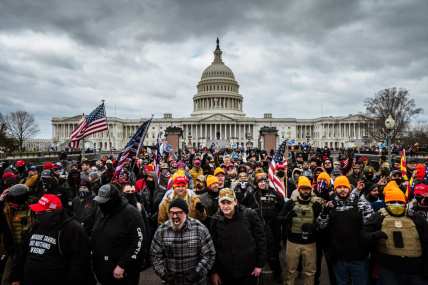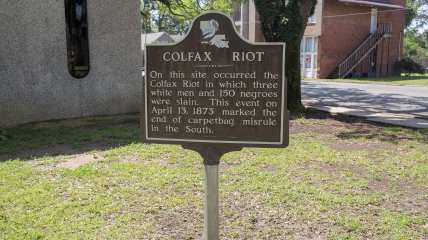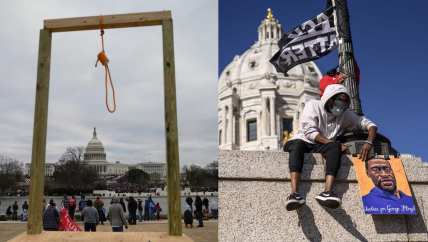White men getting away with insurrection is an American tradition
OPINION: Long before Maine and Colorado decided to remove Trump from their respective state’s ballot, some of America's most powerful politicians managed to avoid the consequences of insurrection.
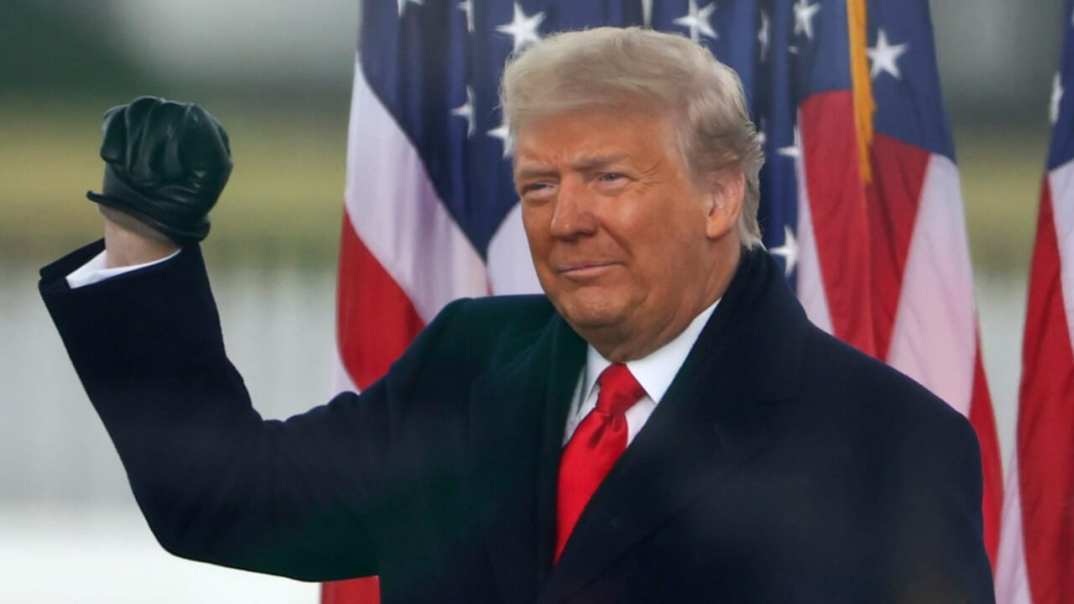
Editor’s note: The following article is an op-ed, and the views expressed are the author’s own. Read more opinions on theGrio.
No person shall be a Senator or Representative in Congress, or elector of President and Vice-President, or hold any office, civil or military, under the United States, or under any State, who, having previously taken an oath, as a member of Congress, or as an officer of the United States, or as a member of any State legislature, or as an executive or judicial officer of any State, to support the Constitution of the United States, shall have engaged in insurrection or rebellion against the same, or given aid or comfort to the enemies thereof. But Congress may by a vote of two-thirds of each House, remove such disability.
— 14th Amendment, Section 3
When the Colorado Supreme Court ruled that Donald J. Trump’s insurrectionist activities made him ineligible to seek office again, the decision was pretty clear cut, as legal scholar Elie Mystal wrote for The Nation:
Donald Trump engaged in insurrection. That’s not me saying it, or Jack Smith saying it; that’s what the first court to hear this case, the Colorado state court, ruled at trial a few weeks ago. The trial court found that Trump engaged in insurrection, but twisted itself into an illogical knot to say that Section 3 didn’t apply to Trump because he was the president of the United States and not an “officer” of the United States.
That was silly. Most of what the Colorado State Supreme Court did in its 215-page opinion unraveled that logical inconsistency and applied a more accurate interpretation of Section 3 and Colorado state law to the facts (that Trump is an insurrectionist) that were found by the trial court. If the 14th Amendment means what it says, this isn’t a controversial opinion, legally speaking. Insurrectionists cannot hold office again.
On Thursday, Maine Secretary of State Shenna Bellows removed Trump’s name from the 2024 Republican primary ballot. Bellows paused her decision until a court could hear an appeal. Even before Trump finagled his way back on the Colorado ballot, Mystal predicted that a court ruling would not spell the ultimate end of the Donald Trump presidential threat. While the ever-brilliant Mystal based his reasoning on his understanding of the American judicial system, my opinion was based on one simple fact.
White boys be insurrectin’.
The history of American politics is filled with so-called “patriots” who got away with “an act or instance of revolting against civil authority or an established government.” Engaging in “open, armed, and usually unsuccessful defiance of or resistance to an established government” is as American as apple pie (which is actually not American at all). Even worse, when white men attempt to rebel against or overthrow the government, nothing usually happens — especially if Black people are their targets.
Here are just a few historical examples of politicians who managed to avoid that pesky Constitution they love so much.
1. War of the Broke White Boys
After the American Revolution, the individual states that participated in the breakup with Great Britain were heavily in debt. To pay their bills, North Carolina lawmakers lopped off the western half of the state, ceding it to the Continental Congress. The citizens of the amputated area elected Revolutionary War hero John Sevier as its territorial president. Sevier proposed that, instead of joining this brand new union of “United States,” the Republic of Franklin should secede, kick the Native Americans off the land and become a subject of Spain. But in 1788, federal tax collectors seized the white settlers’ land and slaves for their unpaid debts, so the pro-secessionists decided to go to war instead.
The Battle of Franklin lasted about 10 minutes.
Following the arse-whipping, rebellion leader Sevier was arrested for treason but was never tried. And, like many great white insurrectionists, he failed up. Sevier’s military rank was restored, he was refunded his enslaved people, and he was elected to the North Carolina Senate. He eventually reached the territory’s highest office when the Republic of Franklin applied for statehood and became the state of Tennessee.
And that’s how history is rewritten. Instead of an insurrectionist, Tennesseans describe their founding father this way:
“John Sevier, pioneer, soldier, statesman and a founder of the Republic, was Tennessee’s first governor and one of its most illustrious citizens.”
2. Enslaver Psi Phi
When a congressional commission discovered that Secretary of War John B. Floyd (Not the guy who made that song with Tupac) had funneled military weapons to pro-slavery confederates in South Carolina and ordered soldiers to abandon Fort Sumter, the site of the Civil War’s first battle, he was indicted for treason, but the charges were dismissed. Little did anyone know that Floyd was a member of the Knights of the Golden Circle — a secret pro-slavery frat dedicated to creating a slave empire.
Originated “at Lexington, Kentucky, on the fourth day of July 1854, by five gentlemen who came together on a call made by Gen. George Bickley” the group proposed to build a 2,400-mile slaveholding empire in a “golden circle” that included the southern United States, the West Indies, Mexico and parts of Central America. President James Buchanan had two cabinet members who were knights, including Vice President John C. Breckinridge and Secretary of War Floyd (Not the pretty boy). Some of the most prominent members were Ku Klux Klan founder Nathan Bedford Forrest, confederate President Jefferson Davis and notorious bank robber Jesse James. Of course, it’s specious to label these men as insurrectionists …
Unless you count the Knights’ failed plan to kill Abraham Lincoln as an “act of revolting against civil authority or an established government.” Fortunately, that plot did not succeed.
Oh wait …
I forgot to mention that John Wilkes Booth was also a “known member” of the Knights of the Golden Circle.
3. The Great Caucasian Coup
On Sept. 14, 1874, 5,000 to 8,000 armed members of a pro-white militia gathered on Canal Street in New Orleans to kick off a coup d’etat.
This was not mob violence or a protest gone wrong; it was the culmination of years of planning. Angered by the oppressive regime elected by the state’s Black majority, the insurrectionists planned to overthrow their government and reinstate white supremacy. The White League had recruited disenfranchised confederates, ousted Democrats and power-hungry white Republicans. They held meetings and training sessions to learn techniques for slaughtering Black civilians. They even placed newspaper notices warning business owners to close their shops in preparation for the coup d’etat.
Of course, there are some who wouldn’t call this an insurrection, a rebellion or an act of white supremacy. Well, the United Daughters of the Confederacy would disagree. Every year, this group of white women laid a wreath at the monument to the “Battle of Liberty Place” until they eventually funded a plaque that read:
McEnery and Penn having been elected governor and lieutenant-governor by the white people were duly installed by this overthrow of carpetbag government, ousting the usurpers, Governor Kellogg (white) and Lieutenant-Governor Antoine (colored). United States troops took over the state government and reinstated the usurpers but the national election of November 1876 recognized white supremacy in the South and gave us our state.”
The insurrectionists eventually regained control of the Louisiana government and set about eliminating the threat of Black voting power. “We met here to establish the supremacy of the white race,” remarked Judiciary Committee Chairman Thomas Semmes during his closing remarks of Louisiana’s 1898 Constitutional Convention. “Our mission was, in the first place, to establish the supremacy of the white race in this State.”
Nothing ever happened to McEnery, Penn or the thousands of white men who “engaged in insurrection or rebellion against” their government.
4. Fear of a Black Penis
After the Civil War, African Americans held political positions and economic power in the majority-Black city of Wilmington, N.C., where poor white farmers and a new generation of Black voters formed a united front. This Fusion Coalition believed in free public education, universal male suffrage and equal rights for all.
Leading into the 1898 election, nine white men declared that “North Carolina is a WHITE MAN’S STATE and WHITE MEN will rule it, and they will crush the party of Negro domination beneath a majority so overwhelming that no other party will ever dare to attempt to establish negro rule here.” They realized there was no way the white Fusionists would vote against their own interests …
Unless they convinced the white minority that Black men were stealing all the white women.
To prove their point, they pointed to a recent speech by Rebecca L. Felton, a pro-lynching white feminist who later became the first woman to serve in the U.S. Senate. In August 1897, Felton expressed the most concern for the nonexistent plague of white women being raped by ravenous Black men, explaining: “If it needs lynching to protect woman’s dearest possession from the ravening human beasts—then I say lynch, a thousand times a week if necessary.”
Alexander Manly, who owned Wilmington’s only Black newspaper, pointed out that Wilmington was filled with mixed-race children because white men were, more often than not, the interracial rapists. “Don’t ever think that your women will remain pure while you are debauching ours,” Manly wrote. “You sow the seed — the harvest will come in due time.” He added that white women were really having consensual sex with Black men because they couldn’t be sexually satisfied by white men.
White Wilmington was furious. After holding a political rally that was literally called the “White Supremacy Convention,” the white residents loaded the ballot box with fake votes and warned African Americans what would happen if they voted. By election day, many Black Wilmingtonians had decided not to vote, hoping to avoid violence. On the morning of the election, the white supremacy party issued a “White Declaration of Independence” and declared that their superior intelligence should be recognized by allowing them to be in charge, regardless of votes.
The Fusion Party won anyway.
The next morning, 500 armed white Wilmingtonians burned down the office of Manly’s newspaper. By the time they reached the Black section of town, the mob had grown to 2,000. After killing a few Black people on the way, they forced the Fusionist mayor and aldermen to resign at gunpoint. As Blacks fled the city, the terrorists dragged the most prominent Black businessmen to the train station and, in front of a crowd of applauding white people, forced them to board the train.
The leaders of the Secret Nine sent George Roundtree to the state legislature to ensure that Black men were never able to vote in the state. After taking an oath to protect the Constitution, Roundtree wrote, introduced and chaired the committee that inserted the infamous “Grandfather Clause” — modeled after a Louisiana clause passed in 1898 — in the state constitution, which disenfranchised Black voters in the state for more than a half-century.
To this day, Wilmington is still a majority-white town ruled by a white majority.
5. The Bloodless Insurrection
If armed insurrectionists don’t shoot anyone, is it still an insurrection? What if they just threaten violence?
In 1981, the Republican Party created a campaign of propaganda and terror to win the New Jersey gubernatorial race. The GOP created a gun-toting “Ballot Security Task Force” that threatened and intimidated voters in majority Black and Hispanic precincts. A year later, after Black voters filed a federal lawsuit, the Republican National Committee said: “My bad. We don’t do that again.” The RNC agreed to a consent decree that banned the party from monitoring polls during elections. The order expired in 2018, making the 2020 presidential election the first where Republican shenanigans were not scrutinized by federal authorities.
Thomas Kean, the 1981 Republican nominee for N.J. governor, won the race and went on to serve two terms as governor and chaired George W. Bush’s 9/11 commission.
6. Georgia
In 1868, Georgia’s entire government engaged in an insurrection.
After the passage of the 13th and 14th Amendments, the Freedmen’s Bureau, under the protection of the U.S. Army, helped newly freed slaves in Georgia register to vote. Because of the large number of registered Black voters, Georgia Republicans elected three Black state senators and 30 state representatives in 1868. White supremacists flocked to Georgia to intimidate Black voters and, in early September, white Georgians expelled the “Original 33.”
Two weeks later, on Sept. 19, Black voters marched 25 miles to Camillia, Ga. The plan was to protest the expulsion of Black legislators at a rally for a former Freedman Bureau worker turned political candidate. As the rallygoers approached Camilla, the town’s white residents — not the Klan, not the White League, just all the white people — laid in wait and opened fire from doorways and rooftops.
“The affair at Camilla seems to have been a massacre,” wrote Colonel John Randolph Lewis. “It is estimated that at least fifty freedmen were killed & wounded.”
It worked.
Only two Black people showed up at a polling place in Camilla for the November election. When Black voters did show up, white poll workers changed their votes or simply threw them away. Because of this, white “redeemers” were able to take over the legislature and rewrite the constitution, including Black codes, which officially banned them from voting.
“How long I shall have the heart to deceive these freedmen by false promises, & how long I shall be able to deceive them by such promises, I cannot say, but I imagine that it is not long,” wrote Lewis. “When they have no confidence in my fair promises, what then?”
The incident was so egregious that Georgia’s admission to the Union was revoked, making Georgia the first and only state to leave or be kicked out of America twice for being too racist. Six months after the Camilla Massacre, Congress passed the 15th Amendment, guaranteeing the right to vote. Georgia was readmitted into the Union after agreeing to seat some of the members of the Original 33.
Some.
One-quarter of the Original 33 were killed, threatened, beaten or jailed. The last one standing, William H. Rogers, resigned in 1907 after the state passed another law disenfranchising Black voters. No African-American held a seat in the Georgia Legislature again until civil rights attorney Leroy Johnson was elected to the state Senate in 1962. Contrary to popular belief, it wasn’t just the conservative Democrats who ousted these Black legislators. To regain control of the political apparatus, white Republicans formed their own anti-Black wing of the party called the Lily White Republicans. Georgia would later officially recognize the insurrection known as the Camillia Massacre …
7. The Civil War
Maybe you’ve heard of this one.
After white supremacist traitors failed at creating a utopia for race-based human traffickers, pro-slavery President Andrew Johnson gave “every person who directly or indirectly participated in the late insurrection or rebellion, a full pardon and amnesty for the offence of treason against the United States.”
8. The Two-State Solution
In the early 1900s, anyone who wanted to succeed in South Carolina politics could just claim they “fought in ’76.”
During the election of 1876, slave-owning confederate General Wade Hampton III began his campaign for governor by starting an intra-state civil war against the state’s majority Black voters. White supremacist Democrats slaughtered Black freedmen across the state and stole so many votes that it threw the results of the presidential election into question. When federal troops arrived, “Five thousand of [Hampton’s] armed supporters were preparing to overwhelm the thin line of federal troops surrounding the edifice and violently depose the other claimant to the office, the incumbent Republican “carpetbagger” Daniel Chamberlain.”
For nearly six months, the state actually operated with two governors. To settle the electoral college dilemma, 15 white men decided to award Republican presidential candidate Rutherford B. Hayes with the state’s Electoral College votes. In exchange, the Compromise of 1877 named Hampton as governor of South Carolina and allowed Southern states to withhold Black people’s constitutional rights without federal interference. It was the f
The result of that original “Stop the Steal” insurrection became known as “Jim Crow.”
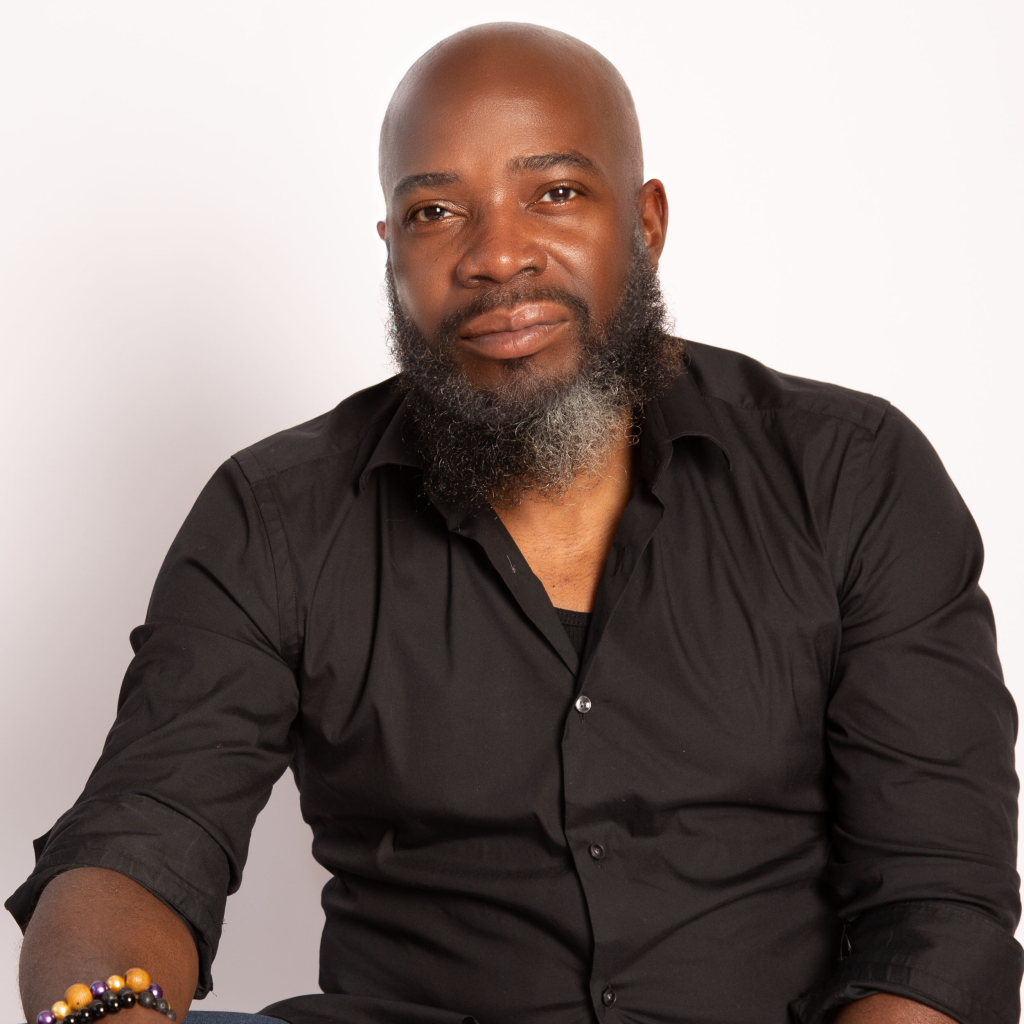
Michael Harriot is an economist, cultural critic and championship-level Spades player. His New York Times bestseller Black AF History: The Unwhitewashed Story of America is available everywhere books are sold.
Never miss a beat: Get our daily stories straight to your inbox with theGrio’s newsletter.
